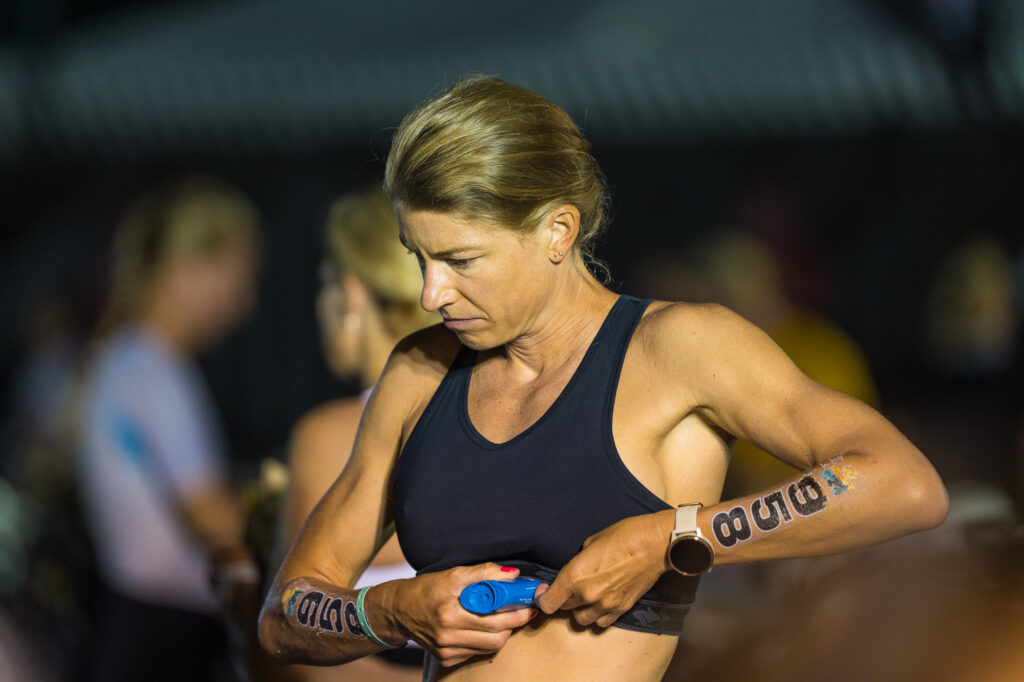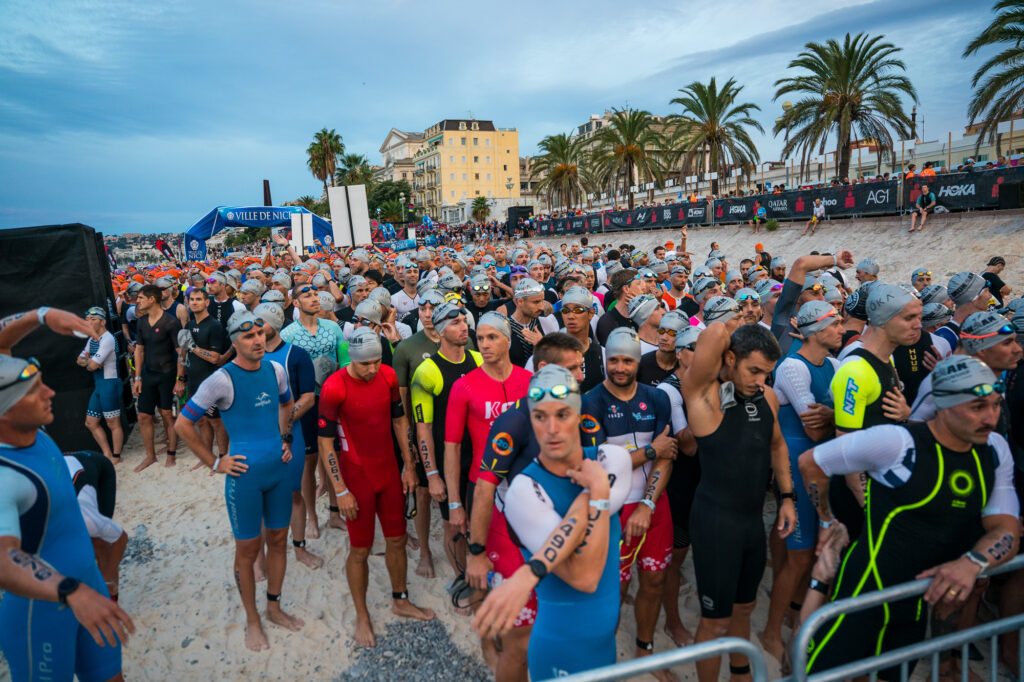Opinion: IRONMAN’s Changes to Kona Qualification Are Commendable. They Don’t Go Far Enough.

IRONMAN this morning announced revisions to its Kona qualification system. The brief headline: the performance pools are now split by gender, with men and women receiving their own slots outside of age-group winning slots. It’s in answer to the results from the fall 2025 slate of IRONMAN races, where according to IRONMAN’s own data, men were disproportionately indexing in the performance pool, including IRONMAN California where a single woman received one of the performance slots. In fact, 96% of all performance slots had gone to men. IRONMAN will also retroactively award performance slots to fall racers based on this new distribution model.
Let’s be clear: the fact that IRONMAN is making changes this early in the lifecycle of their system is commendable. CEO Scott DeRue and team deserve credit for recognizing the growing discontent amongst customers (including on our forum), and realizing changes must be made. It’s frankly the biggest legacy left behind by former CEO Andrew Messick: IRONMAN transformed itself into a much more customer-centric company over the last decade plus. It’s smart.
But, the more things change, the more certain things stay the same. The allocation of performance pool slots for each gender will be determined based upon the number of athletes starting at each event. So, in other words, if a race is 80% male starters, 20% female starters, then performance pool slots will be allocated upon those lines. Taking your average race awarding 50 slots to Kona, after we remove the most typical age group distribution of 22 age group winners, we’re left with 28 slots. Those would then be set as 22 men’s performance slots, six women’s performance slots.
IRONMAN’s stance on this is that effectively, it will wind up over indexing in women’s slots relative to participation rates, resulting in a closer to 70% to 30% split in qualifiers. This is also accounting for what IRONMAN claims is a roughly four percent drop in women’s participation rates over the past five year period. Ultimately, this split is pretty much what we had from 2019 and before for a single day race in Kona. The only difference between the old proportional system and the new one is how those non-age group podium slots (remember, the age-group winner slot can only be picked up by the top three in an age group; otherwise, it will wind up in the gender’s performance pool) are distributed. Under the pre-2019 days, all that mattered was how many men or women in your age group showed up, and you received a proportional allocation of slots. Now it’s just a matter of gender, and then we go to the math.
This can actually have the effect of reducing slots for certain age groups who might have benefitted from the prior proportional allocation. Let’s say at a given race that women’s 40-44 had 5% of the field, but women made up just 15% of the total field. Under the older proportional allocation, this age group would receive 5% of the slots; in our given example, that means five slots. With the new allocation, there’s one slot for the age-group winner, then there are four additional slots for the entire gender to be competing for.
This is, of course, an extreme example. But, as we have seen with certain races this year under the Kona coefficient math, we have had other extreme examples. At IRONMAN California, men between 50 and 59 made up 19 of the top 50 adjusted times. At IRONMAN Florida, it was 13 in that same bucket. You can see the deltas in the number of slots each age group would have received based on qualification data through IRONMAN California below.
| Age Group | Old Proportional Only Allocation | Current Allocation (AG Winner + Performance Pool) | Difference |
|---|---|---|---|
| F18-24 | 15 | 15 | 0 |
| F25-29 | 16 | 16 | 0 |
| F30-34 | 19 | 20 | +1 |
| F35-39 | 18 | 17 | -1 |
| F40-44 | 19 | 16 | -3 |
| F45-49 | 18 | 15 | -3 |
| F50-54 | 17 | 16 | -1 |
| F55-59 | 15 | 18 | +3 |
| F60-64 | 16 | 16 | 0 |
| F65-69 | 10 | 4 | -6 |
| F70-74 | 4 | 4 | 0 |
| F75-79 | 2 | 2 | 0 |
| F80-84 | 1 | 1 | 0 |
| M18-24 | 29 | 20 | -9 |
| M25-29 | 52 | 29 | -23 |
| M30-34 | 61 | 52 | -9 |
| M35-39 | 56 | 53 | -3 |
| M40-44 | 59 | 53 | -6 |
| M45-49 | 59 | 56 | -3 |
| M50-54 | 54 | 73 | +19 |
| M55-59 | 39 | 59 | +20 |
| M60-64 | 25 | 31 | +6 |
| M65-69 | 16 | 25 | +9 |
| M70-74 | 14 | 17 | +3 |
| M75-79 | 9 | 10 | +1 |
| M80-84 | 1 | 1 | 0 |
The coefficients are giving us, in general, qualifiers that are significantly older than those of the old proportional allocation. And, it’s not just women getting the short end of the stick, comparatively: it’s men who are arguably the fastest age groupers in the sport routinely not qualifying. For a system that IRONMAN claims is meant “to give every athlete the same opportunity to qualify based on performance,” this seems deeply flawed. And it does not take far to reach behind the curtain of the mathematics behind these coefficients to determine what’s happened.
The age-grading performance math is below. (Note: the women’s standards have been revised to reflect the fact that there is now a separate performance pool.)
| Kona Standard | ||
|---|---|---|
| Age Group | Men | Women |
| 18-24 | 0.9698 | 0.9543 |
| 25-29 | 0.9921 | 0.9982 |
| 30-34 | 1.0000 | 1.0000 |
| 35-39 | 0.9895 | 0.9877 |
| 40-44 | 0.9683 | 0.9699 |
| 45-49 | 0.9401 | 0.9470 |
| 50-54 | 0.9002 | 0.9051 |
| 55-59 | 0.8667 | 0.8665 |
| 60-64 | 0.8262 | 0.8041 |
| 65-69 | 0.7552 | 0.7606 |
| 70-74 | 0.6876 | 0.7173 |
| 75-79 | 0.6768 | 0.6150 |
| 80-84 | 0.5555 | TBD* |
| 85-89 | 0.5416 | TBD* |
These coefficients are calculated off of the top 20% of finishers in a given age group, on a rolling five-year basis, at Kona. IRONMAN says that’s because these are the best age group athletes. Which, to be clear, is probably the right intent. But this does not account for a variety of factors that, on the whole, are resulting in the skew of athlete qualifiers towards older athletes.

First, the demands of Kona are extremely specific. It’s unique in that it’s always guaranteed to be a swim sans wetsuit, unlike most IRONMAN events. It’s hotter and more humid than 95% of IRONMAN races. It’s windy. And with the move to age-group wave starts over the past few years, older athletes are most often to be in the later waves, meaning more wind and heat as the day goes on. This, on its own, creates slower baseline times for these age groups and increasing their effective handicap.
This, combined with then factoring against courses that reward different performance characteristics than Kona does, is creating the dynamic of rewarding certain age groups. Take IRONMAN California, for instance. It’s a course with a faster than average swim, and relatively unchallenging bike and run. Factored with typically cooler temperatures, and by its nature, the top athletes across all age groups will be less spread apart. But then due to the coefficients, older athletes will have “overperformed” their projected index.
Using Kona alone to create the calculus is inherently building bias into the system — something that we had pointed out when IRONMAN announced this system over the summer. It’s not that the best or fastest athletes are being selected; rather, it’s those who are best against a flawed dataset. Today’s changes don’t fix the underlying issue of the coefficients themselves not reflecting performances across courses.
The long-term solution is two-fold, in my opinion. The first to address would be needing to factor course difficulty into these coefficients in order to create the baseline at certain places. At IRONMAN California, for instance, those coefficients for older men’s age groups may need to be closer to .95 to reflect the race dynamics at play. But at other courses, there may need to be factoring the other way, such as in Lanzarote or Lake Placid. Anytime we’re seeing such a heavy indexing in a given age group should give us pause as to whether the system is, in fact, working as intended.
The second is to make a determination as to whether proportionality should be a factor in performance standards, period. I personally do not believe that the number of entrants is a good proxy for determining whether a performance is “deserving” of a world championship slot. For instance, in a sampling of a few fall IRONMAN races, less than 40% of male finishers were under twelve hours, with none of these above twelve hour finishes factoring into the performance standards calculus. If these results are not competitive, why should they count for the purposes of allocations?
I would instead look at trying to have Kona look more like the age group distribution we find at 70.3 racing. This would still, most likely, not result in truly equal results; there is still a question of whether women would fill all of these slots (as, according to IRONMAN, women are less likely to repeat as customers in Kona). But, this goal is not dissimilar from the stated outcome that the Boston Athletic Association has for Boston Marathon qualifying; they specifically seek to ensure the race reflects the demographics of road running races as a whole, as opposed to marathon running specifically, which trends towards being more male-dominated.
Ultimately, the IRONMAN World Championship wears many hats. It’s the race long-course triathletes care about. It’s the race that put our sport on the map. It’s the race that’s supposed to have room for the average athlete, too. Serving all of those masters at once is difficult, especially as we all wind back in a single-day championship. The work IRONMAN has in front of it is just beginning.




Seems fitting considering it’s Kona.
What’s the lesson, what’s the takeaway
Don’t mess with Maui when he’s on a breakaway
Good article.
I thought that the main reason IM changed the system was to stop wondering how many IMWC slots should be allocated to females and how many to males. IM got the criticising pundits off their back - not for long then.
Another thing: I hope their analysis of how the system works and where it’s flawed went deeper than just looking at IM California male/female allocation, as the race simply clashed with women’s Kona.
(I actually don’t care that much; I mostly care about nobody in my family getting cancer; but it’s interesting LOL)
I fear that I can’t follow your calculations. If F40–44 contains 5% of the entire field and that translates to 5 slots under proportional allocation, that would imply a 100-slot race. But in a 100-slot race, 78 performance pool slots would be up for grabs. If women are 15% of the overall field, that would mean a women’s performance pool of 12 slots and not just 4.
On the other hand, if we assume a 55-slot or 40-slot race instead, we get total performance pools of 33 and 18 slots respectively. 15% of that would be 5 and 3 slots, however. And under proportional allocation, an age group which is 5% of the entire field would get just 3 and 2 slots in a 55- and a 40-slot race respectively, not 5.
Additionally, I don’t think it would be particularly realistic for a single women’s age group to contain one third of all female participants.
Awesome article! Following the threads on this is hard bc of content overload/time needed, I found this really great at summarizing things like the course impacts for IMCA and the challenges we still face.

I think a lot of the comments on this article got moved?
In any case, what we are looking at in a 50 slot race is 12 age group top three slots plus typically 4 performance pool slots for women at most Ironmans because it will be sixteen percent of the remaning slots after 12 allocated to both men and women winners. 16% of 26 performance pool slots is 4 slots. If the women’s participation percentage veers higher than 16% to 20% we’re looking at 5 performance pool slots. If it is 25% participation then 6 performance pool slots.
I think a better solution would be to move transition to King Kam parking lots, 2800 slots for men, 1600 for women, 400 for legacy, and have separate performance pools like in 70.3 . This was no fast young men and women gets screwed over either.
King Kam parking lot was used for T1 back around 2000-2002 (one of those years, when the peer had construction).
There’s multiple article threads going (in part, because the comments in the forum are now what appear as comments on the actual article page itself) so conversations might be crossing threads.
I don’t think that any system will be perfect, BUT I do think that perhaps it’s worth considering the idea of indexing based on an average from ALL qualifying races, not based on Kona. There will of course be easier and more difficult races to qualify at based on gender, conditions and course…BUT there has always been that to some extent.
The real test though, is paying attention to if “worthy” athletes are left out of Kona. What is worthy ? Those close to the podium in their age group.
Ultimately it’s very difficult to be “fair” when input variables are not equal. Accomplishing the #1 goal should be the primary focus (and that is to have those capable of competing). After that, goals are important but not necessary to perfect!
Performance Pool was a positive change and proportional gender/sex based allocation was a positive change.
Challenge for me is the escalation in performance required to KQ with the limited number of slots and dropping times. The KQ for middle aged men reminds me of the pro times from when I started triathlon.
I’m not concerned with performance pool allocation, I’m wondering once I get to sub 9:15 how many potential KQ chances I will lose to men either doping directly with PEDs or indirectly with “TRT”
Ya that’s always been a concern though. Although I guess trt for women and men is on the rise.
Problems with basing the coefficients on Kona itself aside… I think its probably fine if certain races over index on certain age groups - its really no different than picking a race that suits your strengths and minimizes your weaknesses. If you’re a fast swimmer, pick a harder swim. If you’re light, pick a hilly course, etc. If 50 year old men in aggregate happen to better at flat courses (assuming proper draft monitoring), that’s fine all else equal - so long as other race types benefit other athletes.
There are two problems, however.